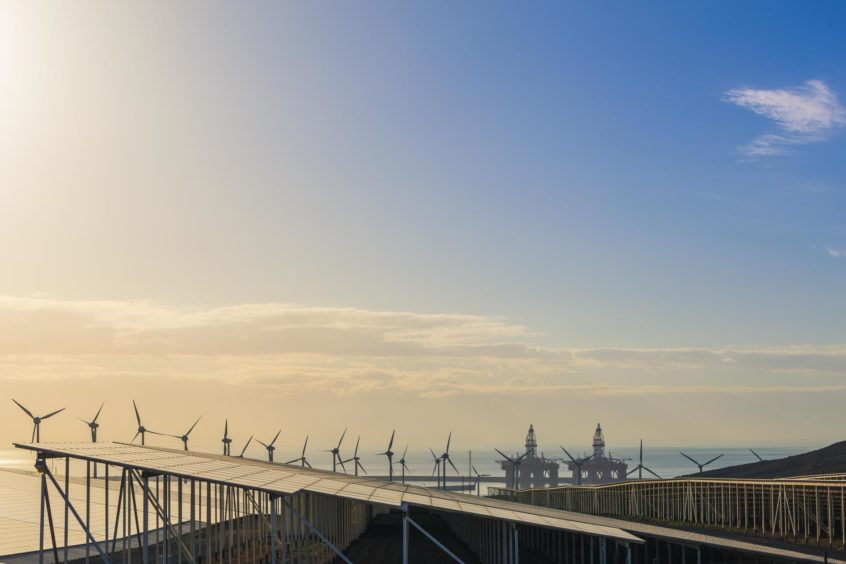
A leasing process for offshore wind to help decarbonise oil and gas operations is expected to open early next year.
Crown Estate Scotland, which will manage the scheme, confirmed that a further announcement is due to be made outlining additional information on the leasing process in November 2021.
It also said the process will support “small scale innovation projects” of less than 100 megawatts (MW), in addition to wind farms designed to decarbonise oil and gas.
The announcement follows the recent opening of a Scottish Government consultation on a new planning process, which will inform the areas to be made available for seabed leases.
It is hoped the leasing round will help develop Scotland as a “destination for increased innovation and supply chain opportunities” linked to offshore renewables.
The process is entirely separate to the ScotWind scheme currently ongoing for commercial scale projects – it closed to bids in July.
Successful applicants in the new seabed leasing round will be granted exclusivity over relevant areas.
Final option agreements will then be put in place following the adoption of the Innovation and Targeted Oil and Gas decarbonisation Offshore Wind Sectoral Marine Plan by the Scottish Government.
Colin Palmer, director of marine for Crown Estate Scotland, said: “This is an exciting development for the offshore wind sector which can play an important role in supporting the decarbonisation of Scotland’s oil and gas sector as we work towards net zero.”
Scott Robertson, Oil and Gas Authority (OGA) director of operations, said: “Power generation accounts for around two thirds of oil and gas production emissions. The electrification of oil and gas installations is vital if industry is going to meet its 2027 and 2030 decarbonisation targets agreed in the North Sea Transition Deal.
“This is a big opportunity for industry to lower its carbon footprint while investing in offshore infrastructure to support the faster growth of wind power in Scottish Waters, all contributing to UK net zero.”
Several of the North Sea’s largest players have already set out their want to use green energy to power offshore assets as efforts to slash operational emissions ramp up.
Shell, BP, Harbour Energy and TotalEnergies are currently engaged in a study on platform electrification plans.
Elsewhere, Cerulean Winds is developing a £10 billion plan to use 200 floating wind turbines to supply power to North Sea platforms.
Marine Scotland is responsible for overseeing territorial seas up to 200 nautical miles on behalf of the Scottish Government.
It delivers renewable consenting under the Electricity Act and Energy Act.
Responding to the Crown Estate Scotland announcement, Claire Mack, chief executive of trade body Scottish Renewables, said: “While new systems to allow Scotland to capitalise on its renewable energy resource are to be welcomed, it is also important that we continue to focus as a country on our net-zero mission, and on the economic and social benefits which meeting that target with renewable energy will bring.
“Both Crown Estate Scotland and Marine Scotland already play vital roles in the development of our industry and it is important that they are supported as the demands on them increase, particularly at a time when ScotWind Leasing – the process through which the majority of our offshore wind power will be developed – remains a live process.
“The equivalent of almost all Scotland’s electricity consumption is now provided by renewable technologies like wind, hydro, solar, tidal and more. But we have much more to do: the next challenge is decarbonising our heat and transport sectors, which together make up around three-quarters of the energy we use, and it is imperative that the legislation and regulations to allow that decarbonisation, using renewable energy and in line with our existing targets, are optimised to that end.”
Recommended for you

